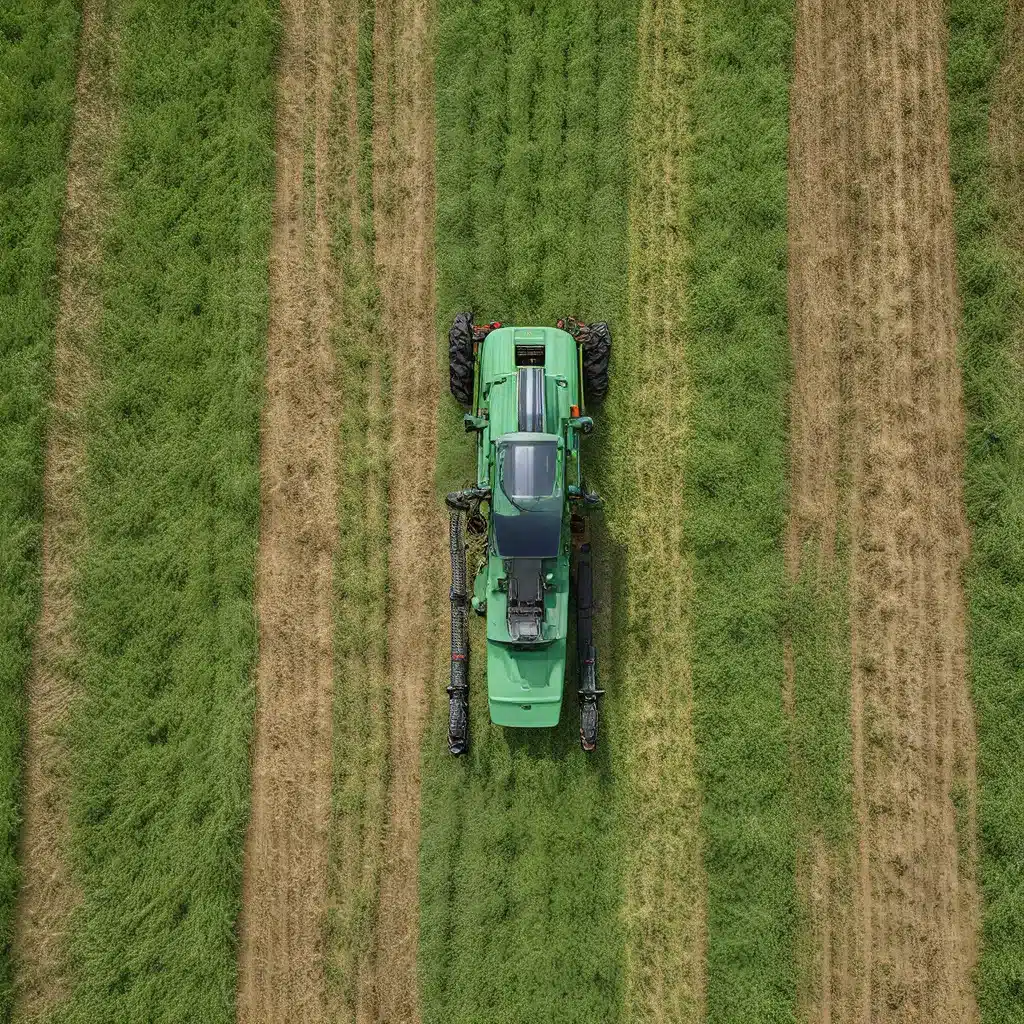
The Rise of Sensor Networks in Agriculture
Precision agriculture, powered by sensor networks and the Internet of Things (IoT), has emerged as a transformative force in modern farming. By leveraging advanced sensor technologies, farmers and agronomists can now monitor and optimize a wide range of crucial factors, from soil moisture and nutrient levels to environmental conditions and crop health. This data-driven approach to agriculture is revolutionizing the way we grow our food, promising increased yields, reduced resource consumption, and more sustainable farming practices.
At the heart of this revolution are sensor networks – interconnected arrays of specialized sensors that collect real-time data from the field. These sensors can be strategically placed throughout the farmland, providing a comprehensive view of the agricultural ecosystem. From monitoring soil moisture and nutrient levels to tracking weather patterns and pest infestations, sensor networks are empowering farmers to make more informed decisions, leading to significant improvements in crop yields and resource utilization.
Sensor Network Design for Precision Agriculture
Designing an effective sensor network for precision agriculture requires careful consideration of various factors, including the specific needs of the farming operation, the environmental conditions, and the available network infrastructure.
One study showcases the use of a wireless sensor network to monitor soil moisture, temperature, and nutrient levels in a vegetable farm. The network consisted of various sensor nodes strategically positioned across the farmland, with each node equipped with sensors for measuring the desired parameters. The data collected by these nodes was then transmitted wirelessly to a central control station, where farmers could analyze the information and make data-driven decisions regarding irrigation, fertilization, and crop management.
Another important consideration in sensor network design is the network topology, which can vary depending on factors such as the size of the farm, the distribution of sensor nodes, and the availability of power sources. Some studies have explored the use of mesh networks, where sensor nodes can relay data to each other, as well as star topologies, where nodes communicate directly with a central hub. The choice of topology can significantly impact the network’s reliability, scalability, and energy efficiency.
Leveraging IoT for Precision Agriculture
The Internet of Things (IoT) plays a crucial role in unlocking the full potential of sensor networks in precision agriculture. By integrating sensor data with cloud-based analytics and smart farming applications, IoT technology enables farmers to gain unprecedented insights and make more informed decisions.
IoT-based systems can provide real-time monitoring of various agricultural parameters, allowing farmers to track and respond to changes in soil conditions, weather patterns, and crop health. This data can be used to optimize irrigation schedules, optimize fertilizer application, and detect early signs of pest or disease outbreaks, leading to significant improvements in crop yields and resource efficiency.
Moreover, IoT-enabled precision agriculture solutions often incorporate machine learning and predictive analytics to help farmers anticipate and address potential challenges. By analyzing historical data and identifying patterns, these systems can provide actionable insights and recommendations to farmers, empowering them to make more informed decisions and adapt to changing conditions.
Securing Sensor Networks and IoT in Agriculture
As the adoption of sensor networks and IoT technologies in agriculture continues to grow, the importance of cybersecurity becomes increasingly critical. Sensor networks and IoT devices can be vulnerable to various security threats, including data breaches, unauthorized access, and denial-of-service attacks, which can have serious consequences for farmers and their operations.
To address these challenges, it is essential to implement robust security measures throughout the sensor network and IoT infrastructure. This includes encryption of data transmissions, access control mechanisms, and regular software updates to address known vulnerabilities. Additionally, secure communication protocols and edge computing solutions can help mitigate the risks associated with connecting sensor nodes and IoT devices to the internet.
By prioritizing cybersecurity and adopting best practices, farmers and agricultural organizations can ensure the confidentiality, integrity, and availability of their sensor network and IoT-based systems, thereby safeguarding their operations and protecting their valuable data.
Optimizing Energy Efficiency in Sensor Networks
One of the key challenges in sensor network design for precision agriculture is energy management. Sensor nodes, often deployed in remote or inaccessible areas, need to operate reliably for extended periods without frequent maintenance or battery replacements.
Researchers and engineers have developed various strategies to optimize the energy efficiency of sensor networks in agricultural applications. This includes the use of low-power sensor technologies, energy-efficient communication protocols, and renewable energy sources such as solar panels or wind turbines to power the sensor nodes.
By prioritizing energy efficiency in sensor network design, farmers can ensure the long-term viability of their precision agriculture solutions, reducing maintenance costs and minimizing the environmental impact of their operations.
The Future of Sensor-Driven Precision Agriculture
As the world faces growing challenges in food production, climate change, and resource scarcity, the role of sensor networks and IoT technologies in precision agriculture is poised to become increasingly crucial. Sensor-driven precision agriculture offers a promising path forward, empowering farmers to optimize crop yields, reduce resource consumption, and enhance the sustainability of their operations.
The continued advancements in sensor technologies, wireless communication, data analytics, and machine learning will drive the evolution of precision agriculture, unlocking new possibilities for real-time monitoring, predictive modeling, and autonomous decision-making. As these technologies become more accessible and affordable, we can expect to see a widespread adoption of sensor-driven precision agriculture, transforming the way we produce food and manage our natural resources.
By embracing the power of sensor networks and IoT in precision agriculture, we can usherin a new era of data-driven farming, where the science of growing crops is combined with the intelligence of advanced technologies. This synergy holds the promise of a more sustainable, efficient, and resilient agricultural system, securing the food supply for generations to come.